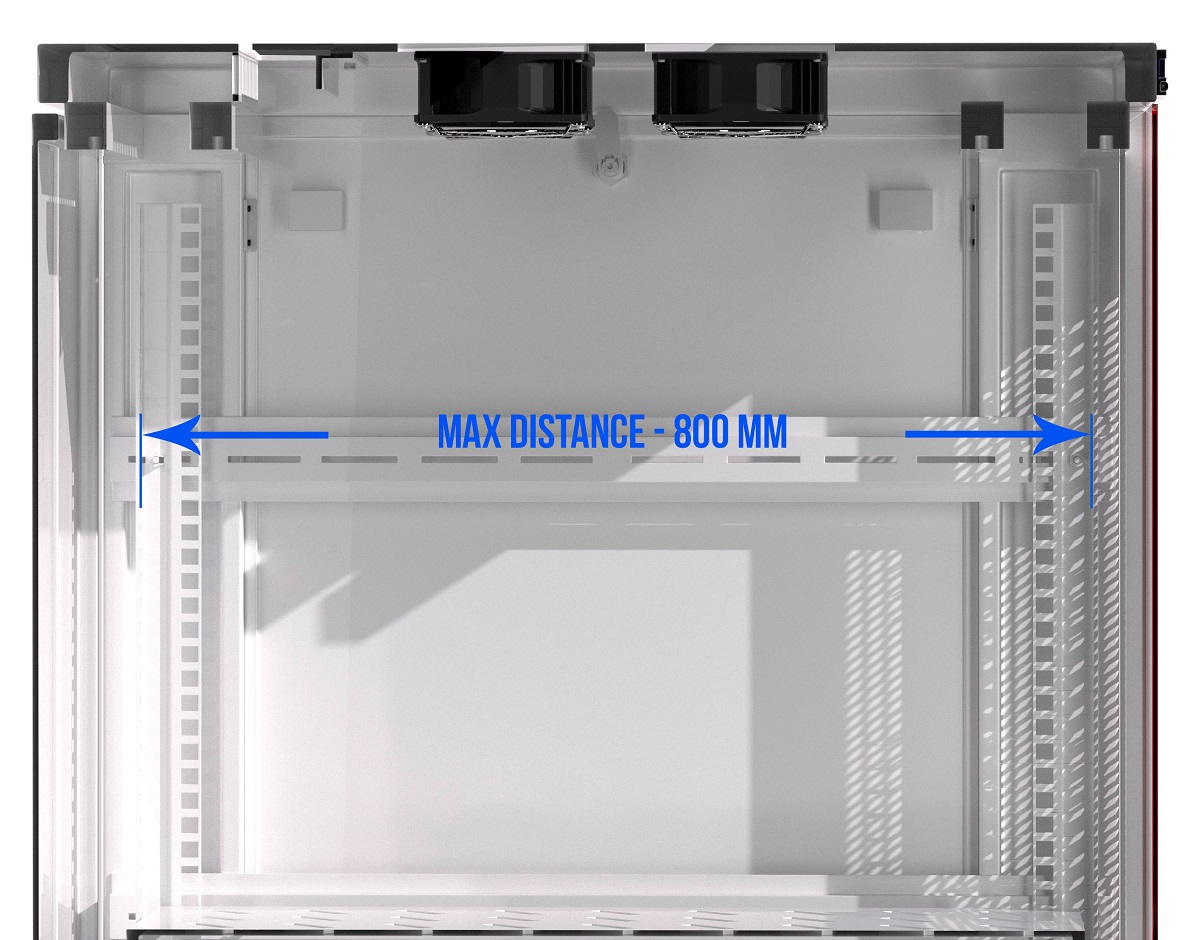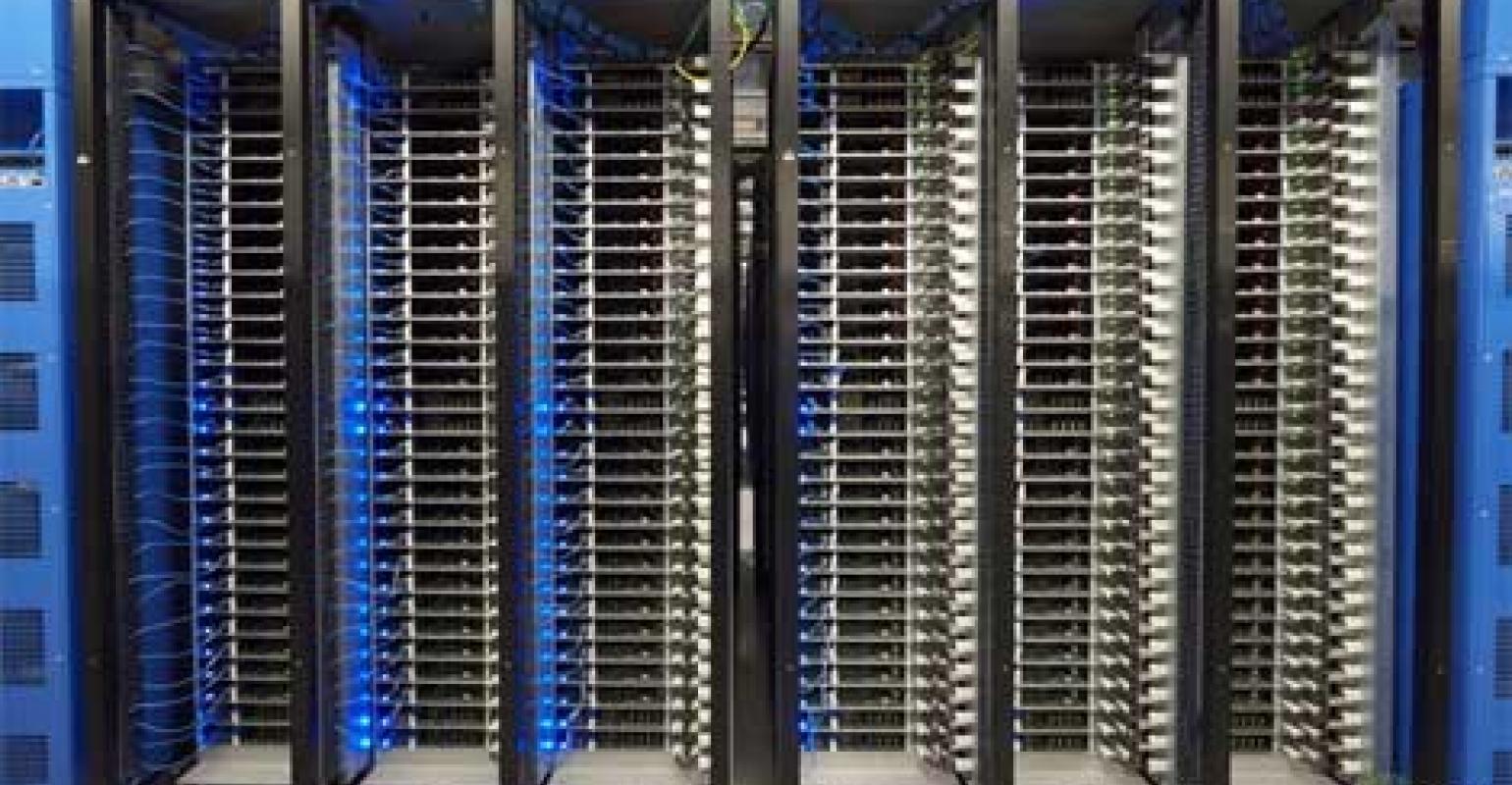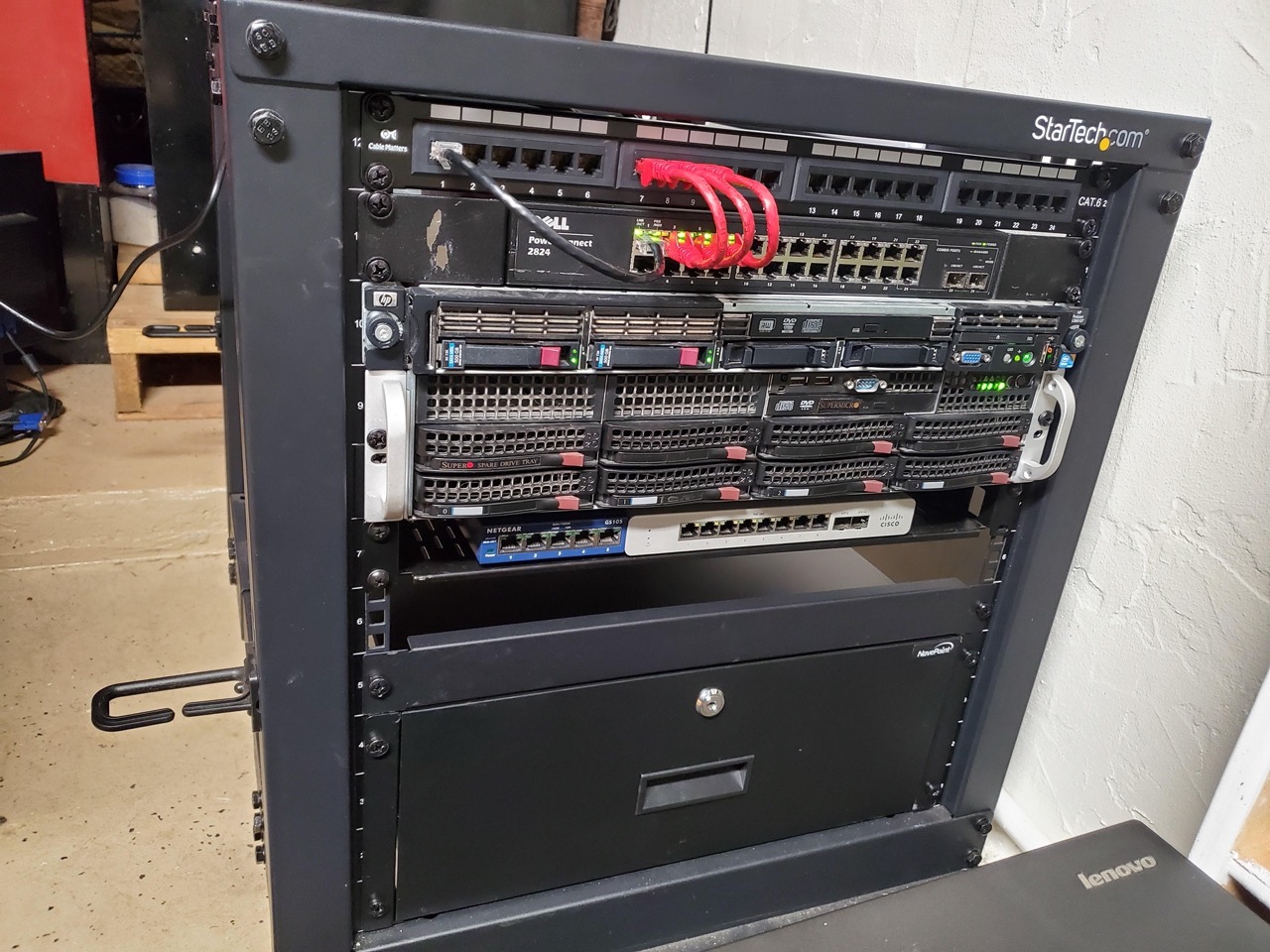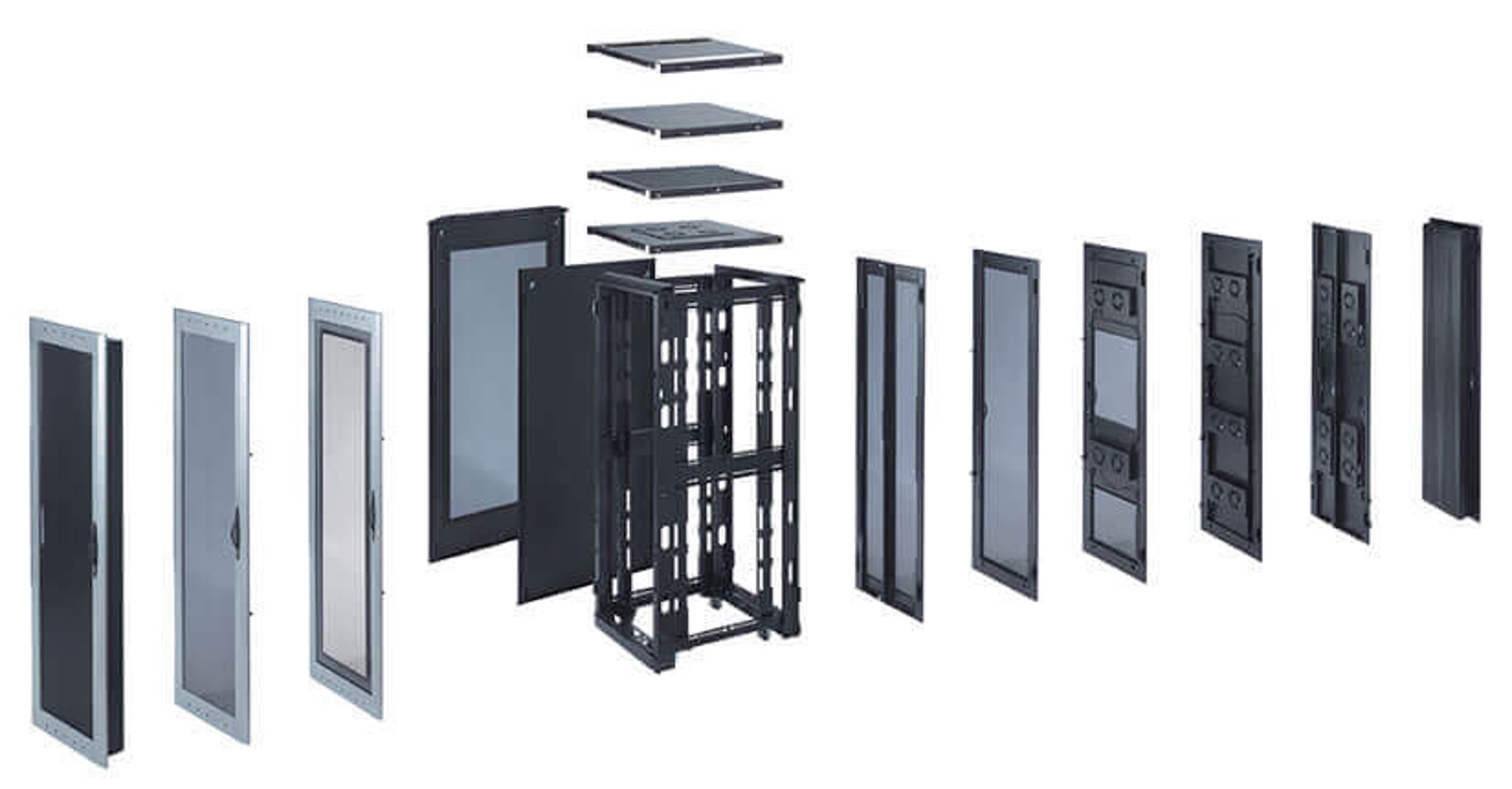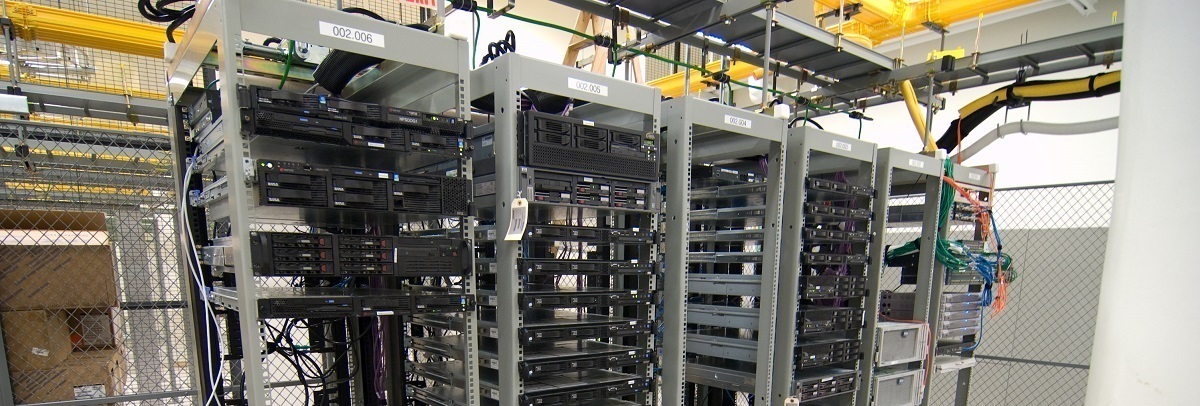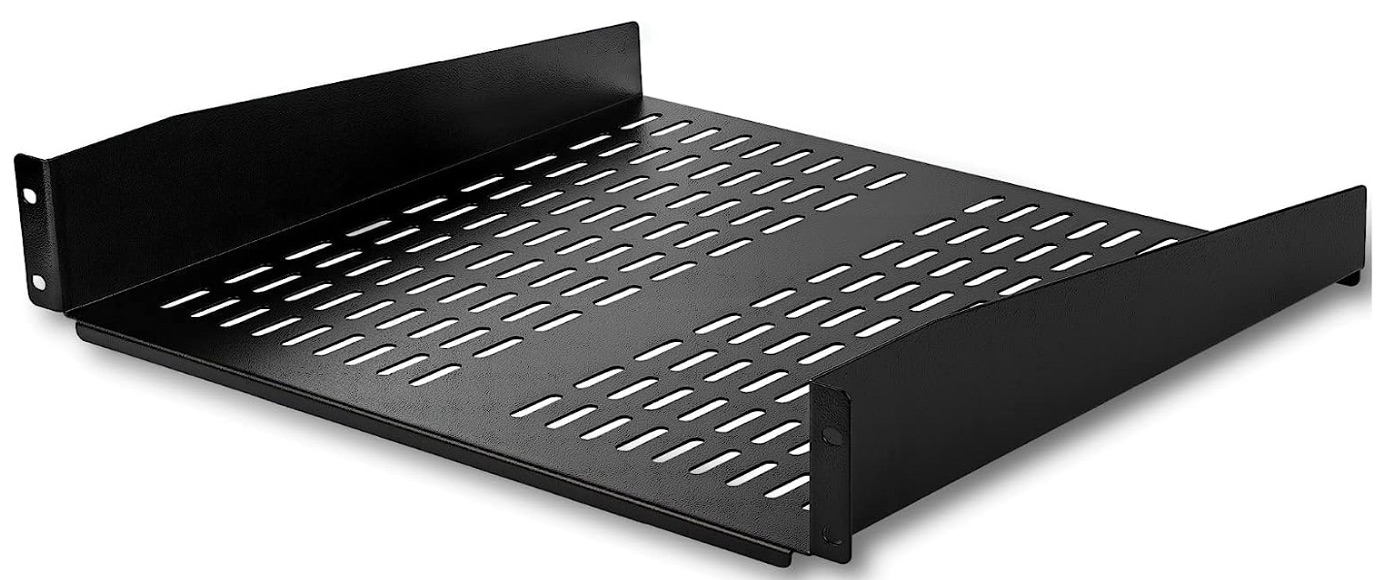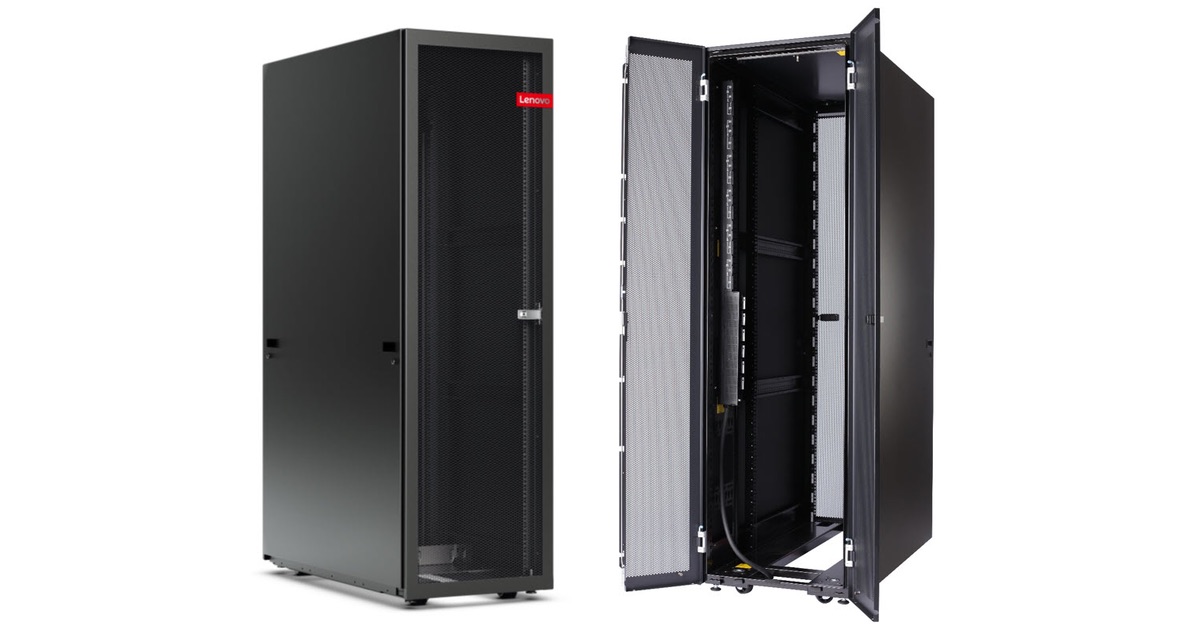Introduction
Server racks play a crucial role in housing and organizing the equipment that powers our digital world. From data centers to offices, these racks provide a secure and efficient way to manage servers, networking devices, and other essential components. When it comes to server racks, one important specification to consider is their width.
The width of a server rack determines the amount of available space for mounting server equipment. It is crucial to understand the standard width of server racks to ensure compatibility and optimal usage. In this article, we will explore the various aspects of server rack width, including its measurement, common sizes, benefits of standardization, and factors to consider when choosing a rack width.
Whether you are setting up a new data center or upgrading your current infrastructure, understanding the width of a standard server rack is vital. This knowledge will help you make informed decisions that align with the requirements of your equipment and ensure smooth operations. So, let’s dive into the world of server rack widths and discover the ins and outs of this essential specification.
Understanding Server Racks
Before delving into the specifics of server rack width, it’s essential to have a solid understanding of what server racks are and their role in housing and organizing server equipment. Simply put, a server rack is a dedicated framework that provides a secure and organized space for mounting various IT components and infrastructure devices.
Server racks are designed to accommodate a variety of equipment, including servers, switches, routers, patch panels, and power distribution units (PDUs). These racks offer not only physical support but also ventilation and cable management solutions to ensure optimal performance and easy maintenance of the installed equipment.
Typically, server racks are constructed using high-quality steel and feature a standardized design that allows for compatibility and interoperability across various manufacturers. They consist of upright vertical rails, horizontal mounting rails, and optional side panels and doors. This modular design makes it easy to configure and customize the rack layout according to the specific needs of the equipment being installed.
Furthermore, server racks are designed to be rack-mountable, meaning that equipment is mounted on standardized sliding or fixed brackets known as rackmounts or rack units (Us). Each U represents a vertical space measuring 1.75 inches or 44.45 millimeters in height. The vertical rails in the server rack provide a series of evenly spaced holes or mounting slots where the rackmounts can be attached.
Server racks offer several advantages beyond just providing a physical framework for equipment. They contribute to improved airflow management, efficient cable routing, easy equipment access, and enhanced physical security. Additionally, server racks facilitate scalability, allowing for the easy addition or removal of equipment as the needs of the IT infrastructure change over time.
Now that we have a solid understanding of the purpose and design of server racks, let’s explore how the width of these racks is determined and the significance of standardized rack widths in the next section.
Determining the Width of a Standard Server Rack
When it comes to determining the width of a standard server rack, the industry follows a set of widely accepted guidelines. The standard width of a server rack is typically defined as 19 inches or 482.6 millimeters. This measurement refers to the distance between the inner edges of the two vertical mounting rails that run from the top to the bottom of the rack.
The 19-inch width specification has been in use for decades and has become an industry standard for server racks. This standardization ensures compatibility and interoperability among different manufacturers and allows for easy integration of equipment from various sources. It enables IT professionals to mix and match components from different vendors without worrying about compatibility issues.
It’s important to note that the 19-inch width refers to the usable width inside the rack, excluding the width of the vertical rails. These rails typically take up around 1 to 2 inches on each side, resulting in an overall external width of around 21 inches or 533.4 millimeters for a standard server rack.
The 19-inch width specification is not limited to just server racks; it is also prevalent in other areas of the IT industry. Networking equipment, such as switches and patch panels, as well as audio and video equipment, often follow the same 19-inch standard. This alignment allows for seamless integration and flexibility when designing and configuring IT infrastructure.
It’s worth noting that while the 19-inch width is the most common standard, there are other rack widths available on the market, albeit less prevalent. For example, smaller racks designed for compact equipment may have a width of 10 inches or 254 millimeters, commonly referred to as a “half-rack” width. Additionally, wider racks up to 24 inches or 609.6 millimeters may be used for specialized applications that require extra space.
Now that we understand how the standard width of a server rack is determined, let’s explore the common widths used in server racks in the next section.
Common Widths for Server Racks
While the standard width for server racks is 19 inches, there are variations in rack widths to accommodate different needs and equipment sizes. Let’s explore some of the common widths used in server racks today.
1. 19-Inch Width: As mentioned earlier, the 19-inch width is the most prevalent and widely adopted standard for server racks. This width provides ample space for mounting servers, network switches, and other rack-mountable equipment. It offers compatibility and interoperability across various manufacturers, making it the go-to choice for most IT professionals.
2. Half-Rack Width: For smaller installations or when space is limited, half-rack server racks with a width of 10 inches are commonly used. These racks are ideal for housing compact servers or network equipment. They are often used in smaller offices, home setups, or when a reduced number of equipment needs to be housed.
3. 23-Inch Width: While less common than the standard 19-inch width, 23-inch wide server racks are sometimes used in specific industries or applications. This width allows for slightly more space for mounting larger equipment or accommodating additional cable management solutions. It is often found in industries such as broadcasting, audio/video production, or professional studios.
4. 24-Inch Width: In specialized environments or when additional space is needed, 24-inch wide racks are utilized. These wider racks provide extra room for larger or custom-sized equipment. They can be found in data centers or industries that require unique infrastructure requirements, such as research facilities or high-performance computing environments.
It’s important to note that while the 19-inch width is the standard and most widely available, it is crucial to carefully consider the specific requirements of your equipment when choosing a rack width. Consulting with IT professionals or rack manufacturers can help ensure that you select the appropriate width to accommodate your current and future equipment needs.
Benefits of Standardized Rack Widths
The use of standardized rack widths, particularly the 19-inch width, offers several benefits to IT professionals and organizations. Let’s explore some of the advantages of using standardized rack widths in server rack installations.
1. Compatibility: The primary advantage of standardized rack widths is compatibility. The 19-inch width has become an industry standard, ensuring that equipment from different manufacturers can be seamlessly integrated into a server rack. This eliminates compatibility issues and allows for the easy mixing and matching of components from various vendors.
2. Interoperability: Standardized rack widths enable interoperability among different equipment types. Networking devices, servers, storage arrays, and other IT components designed for rack-mounting are typically built to conform to the 19-inch width standard. This interoperability provides flexibility in designing and configuring the IT infrastructure, allowing for versatile and efficient setups.
3. Scalability: With standardized rack widths, organizations have the flexibility to scale their IT infrastructure as needed. As new equipment is added or existing equipment is replaced, the consistent rack width ensures that it can be easily accommodated within the existing racks. This scalability simplifies future expansions or upgrades, reducing the complexity and cost associated with modifying the rack infrastructure.
4. Availability of Accessories: Standardized rack widths have also led to the availability of a wide range of rack accessories to enhance functionality and convenience. Cable management panels, blanking panels, power distribution units (PDUs), shelves, and other rack-mounted accessories are designed to fit the 19-inch width. This abundance of compatible accessories makes it easier to organize cables, improve airflow, and maximize the utilization of rack space.
5. Cost-Effectiveness: Another advantage of standardized rack widths is cost-effectiveness. Since the 19-inch width is the most commonly used and readily available, server racks of this size are more competitively priced. Moreover, the availability of a wide range of compatible equipment and accessories reduces the need for customized or proprietary solutions, which can be more expensive. Standardization helps in creating an ecosystem where cost-effective options are abundant.
In summary, standardized rack widths offer compatibility, interoperability, scalability, availability of accessories, and cost-effectiveness. These benefits make it easier for organizations to design, maintain, and upgrade their IT infrastructure while ensuring optimal performance and convenience. When selecting a server rack, opting for a standardized width, such as the 19-inch width, is recommended to leverage these advantages.
Factors to Consider when Choosing Rack Width
While the standard 19-inch width is widely used in server racks, there are instances where other widths may be more appropriate for specific needs. When selecting a rack width, it’s essential to consider several factors to ensure compatibility and optimal usage. Let’s explore some key factors to consider when choosing a rack width.
1. Equipment Size and Type: The size and type of equipment you plan to install in the rack are crucial considerations. Most server and networking equipment, as well as accessories, are designed to fit the standard 19-inch width. However, if you have specific equipment that requires a different width, such as larger servers or specialized audio/video equipment, you may need to explore wider or narrower rack options to accommodate them properly.
2. Future Expansion: It’s important to consider future expansion needs when choosing a rack width. If you anticipate significant growth or the addition of larger equipment in the future, selecting a wider rack can provide the flexibility required to accommodate these changes. Planning ahead can save you the hassle and cost of replacing racks or struggling to fit new equipment in limited space down the line.
3. Available Space: The physical space where the rack will be installed is another critical factor. Measure the area and ensure that the chosen rack width fits comfortably within the available space. It’s also crucial to consider the depth and height requirements of the equipment you plan to install, as well as any additional space needed for cable management and proper airflow within the rack.
4. Cable Management Considerations: Proper cable management is essential for maintaining a clean and organized IT environment. Take into account the number and thickness of cables that will be used in the rack. A wider rack can offer more space for cable management solutions, such as vertical cable management bars or cable management panels, helping to avoid cable congestion and tangling.
5. Rack Density: The density of your IT infrastructure can also influence the choice of rack width. If you have a large number of rack-mountable devices, opting for a wider rack can provide ample space for mounting and managing equipment. On the other hand, if your infrastructure is relatively small or you have space constraints, a narrower rack may be more suitable to optimize space utilization.
By considering these factors, you can make an informed decision when selecting the appropriate rack width for your specific needs. Keep in mind that standard rack widths are generally the most convenient and cost-effective choice, but it’s essential to ensure compatibility with any specialized equipment or future expansion plans.
Conclusion
Server rack width is a vital specification to consider when setting up or upgrading your IT infrastructure. Understanding the standard width of server racks, typically 19 inches, ensures compatibility and interoperability among different equipment types and manufacturers. The use of standardized rack widths offers several benefits, including compatibility, scalability, and availability of a wide range of accessories.
When choosing a rack width, it is important to consider factors such as equipment size, future expansion plans, available space, cable management needs, and rack density. These considerations will help you select the most suitable rack width that meets your specific requirements and optimizes the utilization of space and resources.
Whether you opt for the standard 19-inch width, a narrower rack for limited space, or a wider rack for larger equipment or future growth, ensuring compatibility and proper planning are essential for a successful server rack setup. Consulting with industry professionals or rack manufacturers can provide valuable guidance in selecting the right rack width for your needs.
By understanding the importance of rack width and considering the factors mentioned, you can create a well-organized, scalable, and efficient IT infrastructure. Standardized rack widths provide the foundation for seamless integration, flexibility, and cost-effectiveness in managing and upgrading your equipment.
In conclusion, selecting the appropriate rack width is an essential aspect of building a reliable and future-proof IT infrastructure. By making informed decisions based on standardized widths and considering the specific needs of your equipment and space, you can ensure compatibility, scalability, and efficient management of your server rack installations.







